Flying saucers from the USA
Zimmerman's "Pancakes"
Of all the American engineers, Charles Zimmerman reached the first success in the field of flying disc-shaped aircraft. It should be noted, the idea to make the wing round in the plan existed before. Only previous ideas remained at the stages of plans or preliminary sketches of the aircraft. In 1933, Zimmerman, having found work at Chance Vought, was able to begin research on the subject of the ultra-low elongation wing. The purpose of his work was to study the properties of the wing with an elongation of about one, as well as various forms of the leading and trailing edges of the wing. For several years, Zimmerman tested various aerodynamic configurations, until he came to the conclusion that the characteristics of the bearing surface were good, having a circular shape in plan.
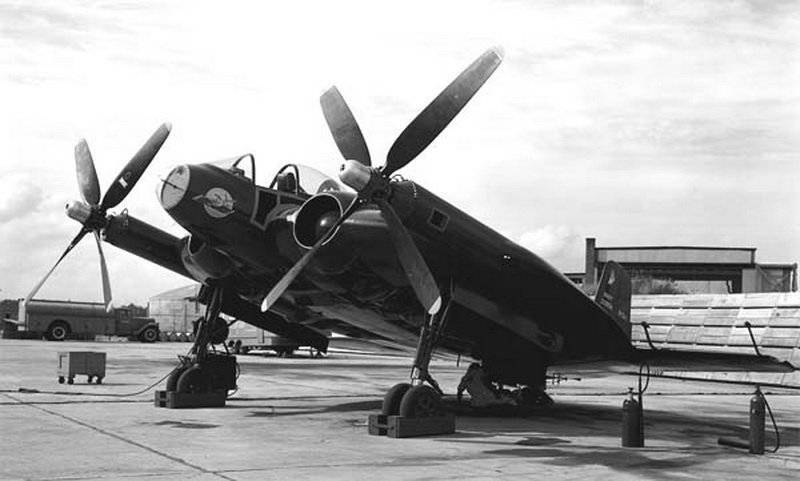
Studies have shown that the disc-shaped wing, despite the relatively high air resistance, has a very good lifting force. In addition, on trial models it was found that the aerodynamic characteristics of an aircraft with such a wing can be improved only by the correct location of engines and propellers. For this, the latter should be placed so that the flow created by them was washing the upper and lower surfaces of the wing. By 1939, the Zimmerman project reached the stage where it was possible to stop experiments on models and begin to design a full-fledged aircraft.
The aircraft with the V-173 index and the unofficial name of the Flying Pancake (“Flying Pancake”) has incorporated all the new ideas of Zimmerman. The main unit of the design was the wing-body, close in shape to the circle. At the same time, the wing profile was symmetrical. Two propellers of the aircraft were carried forward of the wing and had a diameter of more than five meters each. Due to this, as well as specially selected rotation speed of the propellers, the lift force of the wing was several times higher than that of airplanes with a straight wing of the same span. In addition, the propellers rotated so that the vortices descending from the blades twisted in the direction opposite to the movement of the satellite vortices at the ends of the wing. This design feature has increased the effective elongation of the bearing plane from one to four. In this case, no changes in the size of the aircraft is not required.
Inside the wing housing were placed two piston engines Continental A80 with a power of just 80 horsepower. Each of them was connected to its own propeller and synchronized with another engine through an additional shaft. It is worth noting that in order to ensure effective flow around the wing, a separate gearbox had to be inserted into the synchronization mechanism: one motor turned its screw clockwise and the other counter. However, even with such a complex and unusual powerplant V-173 weighed no more than 1400 kg. In the center of the front of the wing-hull was placed cabin with a drop-shaped lantern. For the convenience of the pilot, the lower side of the front part of the wing was made of glass. The fact is that during the sealing of this part of the plane with a canvas or plywood, the pilot could not normally look forward and down, which could have a very bad effect on the landing of the aircraft. Landing and takeoff was planned to carry out in the traditional way, using the runway. V-173 equipped with a simple strut non-retractable chassis. For a purely experimental aircraft it was considered sufficient. Flight control was to be carried out with the help of two keels with rudders and two stabilizers with rudders, which were called “ailertors”. As conceived by Zimmerman, they simultaneously played the role of both the ailerons and elevators. A little later, such a control will be called the term "Elevon."
By the time the prototype was assembled, the US Navy Aeronautics Bureau became interested in the project. Shortly thereafter, they changed their interest to close attention and demanded that the V-173 be further adjusted in view of the possible operation on aircraft carriers. However, the appearance of the car was so unusual that the maritime authorities first demanded to blow the “Pancake” model in the wind tunnel. It got to the point that one of the admirals asked a question like “can this thing fly?”. 15 September 1941, wind tunnel experiments were completed and no one from the higher authorities doubted the potential of the new aircraft. The day after the end of the tests of the full-scale mock-up, the Navy offered Chance Vought a contract to develop a full-fledged deck fighter.
During the purging process, several design flaws were identified, which were soon corrected. In the summer of the 42, the experienced V-173 went to the test. At first, the test pilots were limited to taxiing and jogging. The first flight of the aircraft took place only on November 23. At the same time already in the first flights, the “Flying Pancake” showed excellent characteristics and fully confirmed the correctness of its designer. For example, the take-off speed during take-off did not exceed 45-50 km / h, and two engines in just 80 hp It accelerates to 240 kilometers per hour. For such a weak power plant it was more than good. Not without accidents. At the start of the 43 on the prototype, both engines turned off during the flight. The pilot had to plan on the nearest beach and make an emergency landing. Due to the insufficient strength of the sand "coating" the plane turned over through the nose and damaged the screws. True, the repair took only a few days.
By the time the experienced V-173 was restored, Zimmerman, in collaboration with the designers of Chance-Wout, under the direction of J. Greenwood, completed the development of a new version of Flying Pancake. This time the design implied military use. Only the military, frankly, did not show much interest in the original aircraft. Yes, the take-off and landing characteristics looked promising, but the need to restructure production, introduce new technologies, etc. clearly did not add optimism. Therefore, the layout of the new aircraft with the index XF5U was adopted only in July 1943, and the contract for the construction of two prototypes was signed a year later. The new fighter received the nickname Skimmer - "Skimmer."
In general, the XF5U design resembled a V-173. However, in contrast to the wooden structure of an older aircraft, it was proposed to make a new one out of metalite. This material was a composite of balsa parts coated with aluminum sheet. Metalite had good strength properties and was very light at the same time. In addition, there was the possibility of manufacturing metalite parts by stamping, which promised to significantly reduce the cost of production. The XF5U received larger dimensions compared to its predecessor, which, however, had no effect on permissible loads. The control system as a whole remained the same, but the cockpit significantly altered. Thanks to a new solid frame made of metal, it was possible to move the cab up, which also made it possible to remove the window on the underside of the front of the wing. Six Browning M2 machine guns of 12,7 millimeter caliber were placed on the sides of the cab. On the sides of the pilot's workplace there were two installations of three machine guns each. For the middle 40-x such weapons was considered sufficient, but in the future it was planned to replace the machine guns 20-mm guns. In addition to the barrel arms, the aircraft could carry unguided rockets, bombs, etc. For them, under the middle part of the aircraft there were six pylons.
Separately, it is worth talking about the new power plant XF5U. A full-fledged carrier-based fighter was to be powered by Pratt & Whitney R2000-7 piston engines with a capacity of 1350 hp. Together with the new motors, the updated "Pancake" received new propellers. For the XF5U, Hamilton Standard has developed an original blade propeller shape. Compared to the old ones, they were more efficient at low and medium speeds. In addition, the new four-blade propellers have been optimized for relatively low RPM performance. The total power of the power plant exceeded two and a half thousand horsepower. In combination with efficient propellers and a maximum take-off weight of 7600 kg, this even made it possible to take off vertically. Only for this it was necessary to install the plane on a special ramp.
In mid-June 1945, the first prototype of the Skimmer was ready. The novelty of the design and even its concept itself for a long time prevented the start of testing. The leadership of the U.S. Navy now and then issued new prohibitions on flights. Because of this, the first taxiing was only possible at the end of the 46th. In turn, the first flight took place on January 12, 1947. As luck would have it, few problems with military support turned out to be few. By the beginning of the 47th Navy, funding had also been cut. For this reason, the flight test program had to be reduced. Nevertheless, while maintaining the take-off and landing indicators, it was possible to disperse the aircraft to more than 800 kilometers per hour. For 1945, this was a very good indicator, but not for the 48th. By that time, jet fighters began to arrive in the troops and “Shumovka” simply did not find a place in the nomenclature naval aircraft In early 1948, the program was frozen, and a little later both prototypes were dismantled.
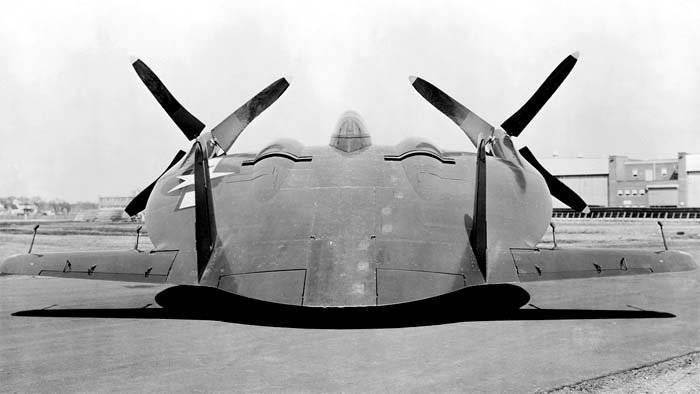
Theoretically, the aerodynamics of the “Flying Pancake” and “Skimmers” made it possible to perform such maneuvers that other aircraft technology was simply not capable of. In addition, the XF5U Skimmer layout could make life much easier for aircraft carrier crews. However, the revolutionary novelty of the design was the factor that put an end to the whole project. Of all the Zimmerman disc-shaped aircraft produced until today, only one of the V-173 prototypes, which is stored in the Smithsonian Museum, has survived to this day.
Flying saucer that didn't fly
For several years after the closure of Zimmerman’s projects, the ideas of non-standard designs were returned only in a scientific manner. Prior to the construction of prototypes it did not reach. The situation changed in 1952, when Avro Canada employee John "Jack" Frost initiated the start of the Avro VZ-9 Avrocar project. It is worth noting that, unlike the previously described constructions, Frost's idea fully corresponded to what most people represent when they used the words “disk-shaped aircraft”. The Canadian designer decided not to make the wing in the form of a disk, but to wipe on another original idea.
Frost decided to use jet thrust, which was already customary for that time, in combination with the so-called. Coanda effect. The essence of this phenomenon lies in the fact that a jet of liquid or gas, moving near an object, tends to approach it or even “stick”. As conceived by Frost, this behavior of the air should have facilitated the maneuvering of the apparatus. First, Avro Canada’s engineers made a small device to demonstrate their ideas. A model with a diameter of just 11 centimeters could rise into the air to a small height, but any mechanisms for maneuvering did not fit into it. However, the Canadian Defense Ministry became interested in the idea and allocated around 400 thousands of American dollars to continue the work. Soon after, the project received an index Y2.
At this stage, the future Avrocar became the object of spy drama. Since 1952, the CIA has been trying to find out if any countries have new designs of aircraft. In 53, the scouts found out about the existence of the Y2 project and reported it to the authorities. Shortly after the transfer of documents "up" gentlemen from the Pentagon contacted the Canadian military and offered them to continue the creation of Y2 jointly. Canada accepted the offer. Among other things, it had pleasant financial implications. The head of the US Air Force research division, Lt. Gen. D. Patt, knocked out funding of two million dollars a year. Very bold for a revolutionary new project. However, the money was allocated and Avro continued research. By the middle of the decade, the VZ-9 project was ready, which, strictly speaking, became the “swan song” of the Y2 program.
The fifteen-meter disk with six turbojet engines, which emitted gases through their own nozzles and also brought into rotation a large-sized turbine, could theoretically rise to any height and fly in any direction. The customer, represented by the American and Canadian military, approved the project, but first demanded to test a new technology on a smaller manned vehicle. Because of this, the "plate" was pressed down to a diameter of about six meters. The power plant was also changed accordingly: now only three engines were placed around the central turbine. Interesting flight control system. For lifting or lowering it was supposed to change the thrust of all engines at once, which influenced the speed of the lifting turbine. To tilt in one direction or another, Avrocar had a special system that changed the thrust of individual engines so that the casing of the apparatus due to its difference leaned in the right direction. This system had to be pretty tricky: it was necessary to take into account the throttle response of the engines, the stability of the entire apparatus and a lot of other parameters.
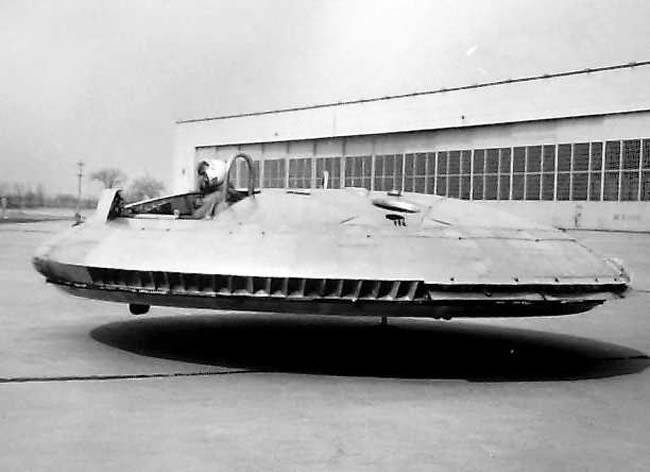
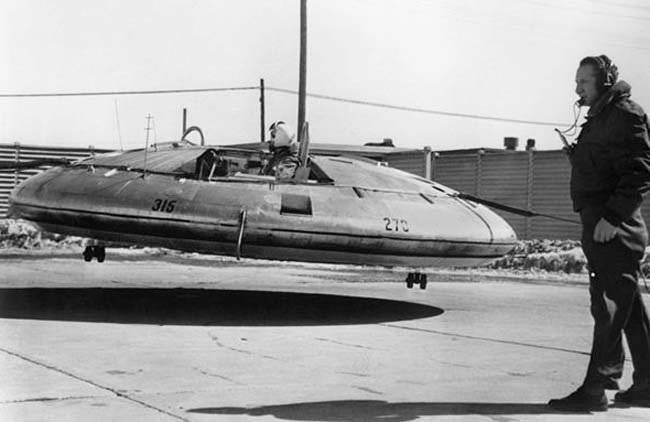
In the middle of 1959, the first prototype of the Avrokar was ready. The time has come for the test. The first weeks were spent on testing the interaction of engines and their control systems. It was not easy, but Canadians and Americans coped with it. By November of the same year, the VZ-9 was ready for the first flight. November 12 "flying saucer" off the ground and hung at a low altitude. Over time, they began to add traction and bring the device to a little greater height. At a distance of about a meter from the ground, Avrocar freely hung, maneuvered, and could move in any direction. But when it came to lifting to a height of at least a few meters, one very unpleasant feature of the project suddenly became clear. A relatively weak prototype propulsion unit could provide satisfactory stability and controllability only at a height of up to one and a half meters. With a further rise, the Avrokar had to rely only on the Coanda effect. The screen effect, in turn, disappeared and the aircraft lost its former stability. After a series of test flights, Avro Canada engineers had to return for quills. Meanwhile, dissatisfied with the results of the Canadian military came to the conclusion that the project was useless and refused to continue to give money.
Over the next months, a team of designers under the leadership of J. Frost tried to find a solution for the problem found and to ensure adequate stability. At this stage of the work several more models were collected on which new ideas were worked out. However, none of the models could not rise to a tolerable height and not roll over. Among the reasons for such behavior of the apparatus were the lack of additional air support (the same screen effect), the exacting design for accurate and accurate balancing, and the need to synchronize the operation of the engines. It was possible to fix all this only with the help of a fundamental change in the design. At the end of 1960, Frost began reworking the project according to his experience. Since 1959, funding for the Y2 project has been provided only by the United States. Over time, US officials responsible for running the program began to doubt its expediency. Therefore, soon after the start of a radical modernization, the financing of Avrokar ceased. Pentagon employees were tough and laconic. In the document on the termination of work indicated the futility of the project, as well as the absence of any satisfactory result at a cost of about twelve million dollars.
Both built prototypes of Avrocar have survived to our time, which are stored in aviation museums in the United States. About ten years ago, a number of Canadian historians advocated the transfer of one of the "Avrokars" into the hands of Canada. They motivated this by the need to recognize the merits of their country in the creation of the project. At the same time, the topic of financing shares was somehow bypassed, although the United States spent more than ten times more money on the Y2 program than their northern neighbor. In particular, and therefore, the conversations of the beginning of the 9s have remained conversations, and both built VZ-XNUMXs are still in American museums.
Sources:
Kudishin I. Rarities of modern aviation. - M .: AST, 2001
http://voughtaircraft.com/
http://avrocar.com/
http://avroarrow.org/
http://nationalmuseum.af.mil/
http://computerra.ru/
http://membrana.ru/
Here is a video of the Vought XF5U "Flying Flapjack"
VZ-9- AV Avrocar
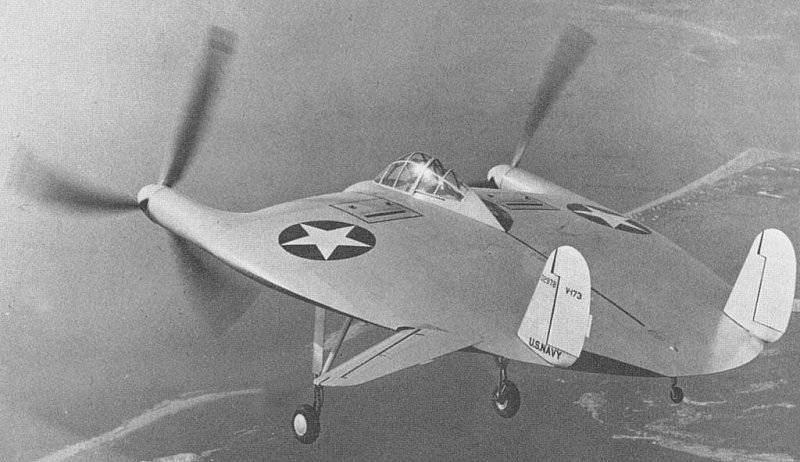
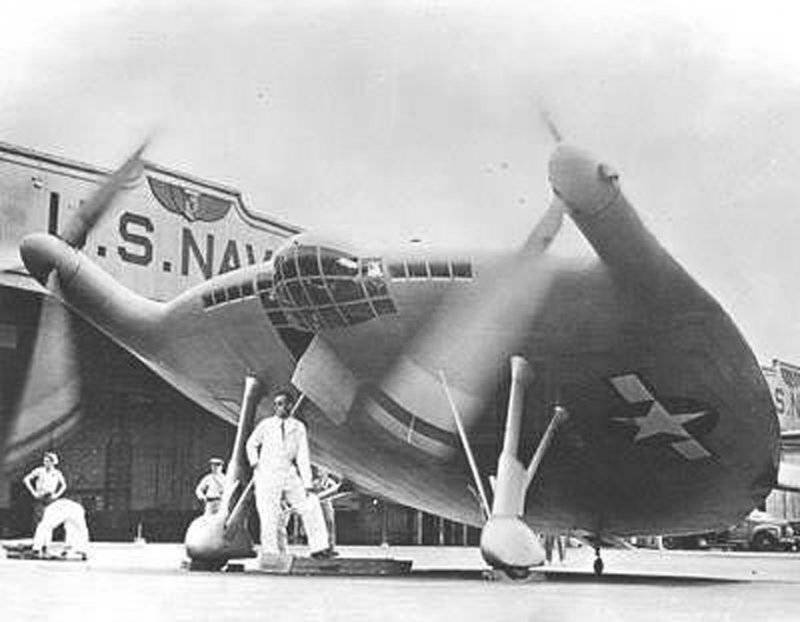
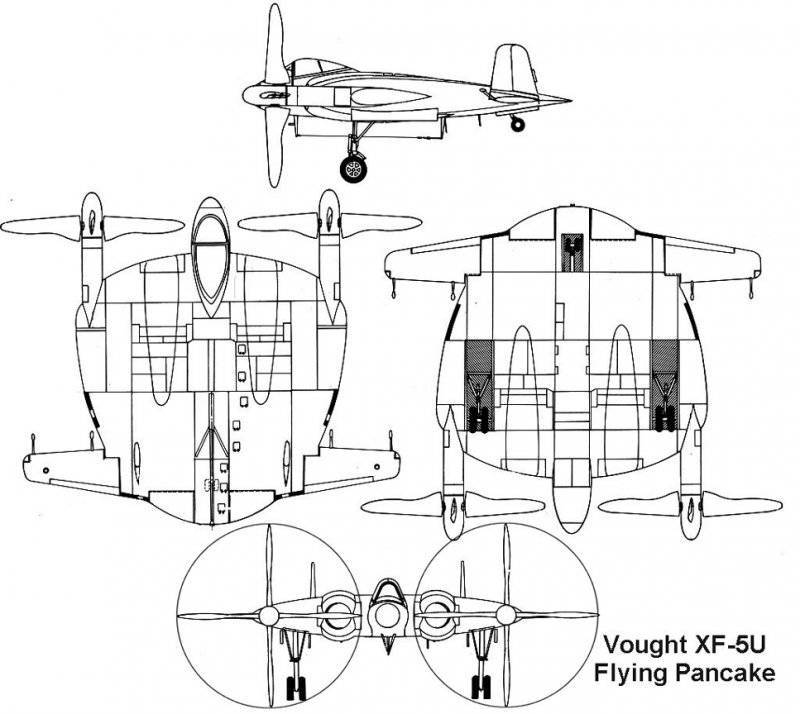
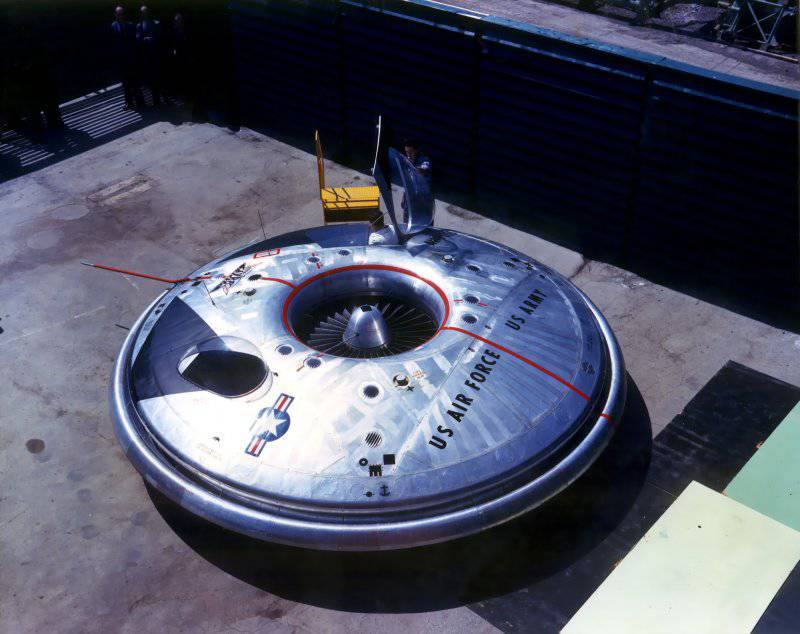
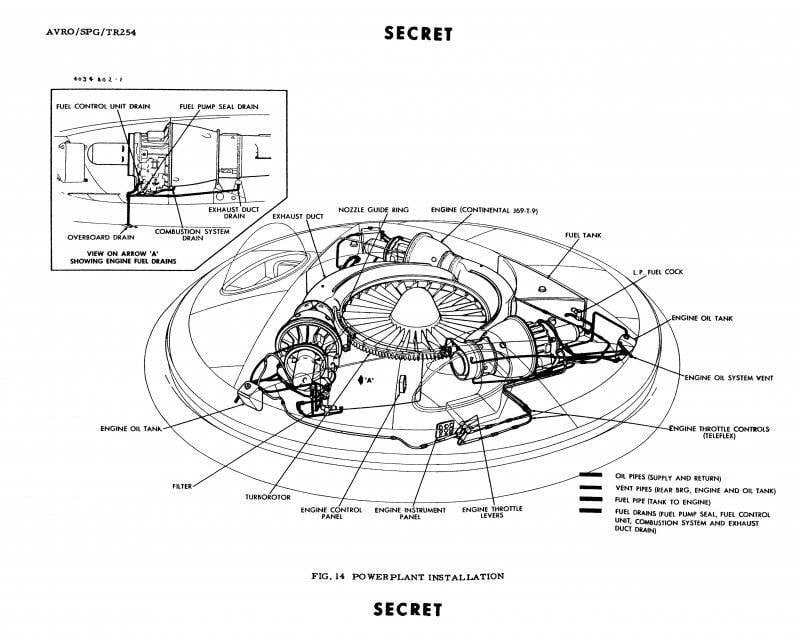
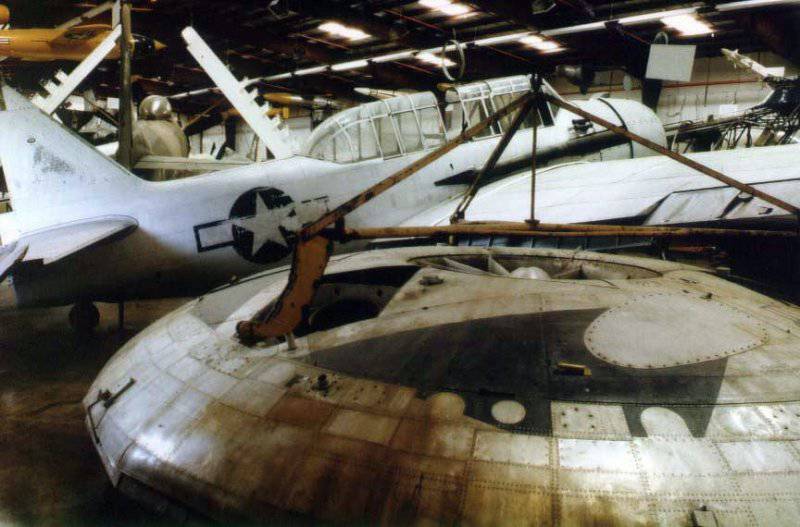
Information